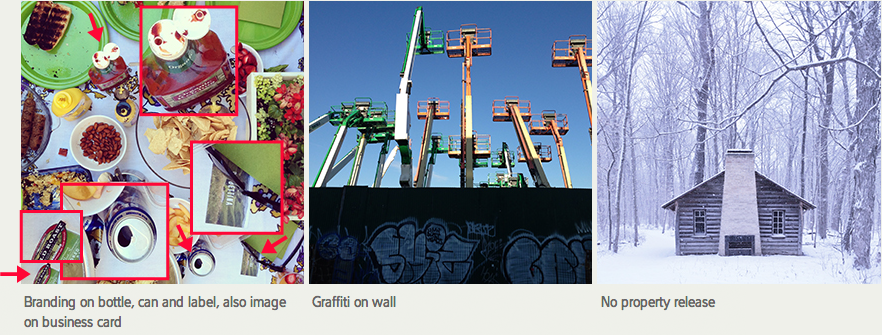Any images that you submit to the marketplace must meet our basic technical standards regarding image resolution and image quality. These are industry standards, created to make sure images can be purchased for as many different uses as possible and to reassure clients that they can use images they select in the way they want to.
Images occasionally fail to meet our stringent creative, technical or legal standards needed for them to be considered for commercial usage, so one of the questions we get asked most often is, "What reasons might you fail an image?". To help make it easier for our members to get their content through editing here is an in-depth list of common issues and faults we encounter when curating content.
Please see our (as supplied by Getty) Intellectual Property Wiki document for a comprehensive guide to legal and intellectual property restrictions.
The subject of an image often has a lot to do with how commercial the image is. If we feel that the subject of an image has no commercial appeal then it will not be accepted.
It’s worth noting that images of subjects such as, sunsets, plants and flowers, pets and animals are very popular with photographers so only the most creative and genuinely exceptional images of these subjects will be accepted.
On the other hand if you shoot model released people images they are not only fewer in number, but infinitely more saleable – done well of course.
Often the simplest ideas are the most commercial. If we cannot work out what an image is trying to say, or, if we feel the idea behind the image has no commercial appeal, then it will not be accepted.
Good image composition is vital for aesthetic appeal and also, it helps to give an image meaning. As a result poorly composed images will not be accepted.
Good lighting can help give an image atmosphere or convey the right mood. Bad lighting can overpower and ruin an otherwise great concept. If an image is too grey and gloomy, has too much contrast or, if the image is just too blown out, it will not be accepted.
Clients do not buy a lot of black and white images, they prefer their content to be colorful as well as filter free.
We are happy for our contributors to enhance their images by using in-camera and post-production filters in a creative way but when a filter or effect offers no creative benefit or, has only been applied to make an everyday subject appear more interesting, the image will not be accepted.
Don’t filter images unless it really does, in your view, improve an already great image – it will drastically reduce the saleability of an image if it looks or feels filtered.
We will only pick the best version of an image. So, if you submit two or more images of the same subject that are very similar, we will only ever accept the best shot and reject the rest.
Edit your content, as we will not edit it for you to find the best in a series of similars, for example. If we feel you are not editing your content, we will reject it all.
We do allow for intentionally out of focus images as long as the effect is creatively or conceptually beneficial to the image. All other images need to be in focus to be selected. Having said this, there are very few subjects for which intentionally out of focus shots are appropriate, so it’s probably best avoid doing it.
The point of focus of an image is also something that needs to be considered. For example, in a headshot, it’s nearly always the eyes that need to be in focus, not just the nose, or ears!
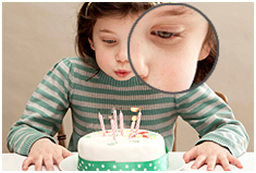
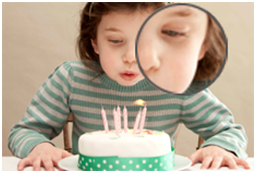
Watch out for camera shake at low shutter speeds. Don't just shoot off-the-cuff: step back, consider your subject, steady that hand and shoot away. It is true that not all images need to have a particular point of focus, but many do and those images that are sharp, but sharp in the wrong place, will be rejected.
Although not technically technical, without an appropriate caption and keywords the technology we use to search for images will not find the content uploaded. There are certain images that require more detailed information than others. Travel images: location is required for example. Flowers: name of the flower is needed. Animals: we need to know which animal it is. Now, we are not insisting on the Latin names, even though that would be useful, but we will not accept, UK, Flower or Animal, respectively, as the key descriptions or keywords for any images in these categories and the same goes for a number of other types of image too.
If an image is too light or too dark, then it will be rejected on technical grounds. Blown out highlights mean an absence of information in that part of the image and that means the image is not suitable for commercial use. Very underexposed images results in a lack of detail that also makes the image unsuitable for commercial sale.
Blown Highlights are a common problem when shooting in very bright conditions, in high contrast scenes or when backlighting. In digital images, blown highlights represent a lack of information in that part of the image and an image with severely blown highlights, or with large areas that are blown out, will not be accepted.
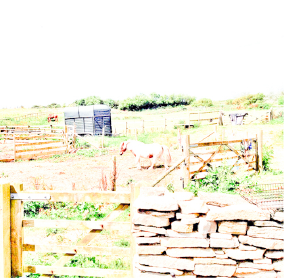
Shooting in low light or exposing for the brightest area of you subject in a high contrast scene can mean loss of detail in the darkest areas of your image. Sometimes a lack of shadow detail and blown highlights occur in the same image as the lens tries, and fails, to capture all the light levels. A substantial lack of detail in the darker areas of your image will mean the image is rejected.

Without manual control of your camera or phone camera, balancing your exposure in certain lighting conditions can be a tough thing to do. Many photographers tend to avoid high contrast scenes all together, but if you see a shot, it’s always worth trying to reposition yourself to find an angle and composition that works. A small amount of flash can work wonders when backlighting and you can always try to make the scenes more lens friendly, by bouncing some light into the scene using a piece of white card or stretched white fabric.
Getting your exposure right whilst taking the shot “in camera”, will give you a better final image. This is especially true for mobile images, editing apps and filters are great to enhance your image, but the basics of in-camera exposure should be treated the same as if you were shooting on a camera.
This appears as a colored fringing on the edges or outline of your subject. It is usually purple and occurs because in certain conditions, the camera lens cannot converge all the different color wavelengths of light to the same point. Chromatic Aberration is more likely to occur when using a shallow depth of field but it is possible to remove it in post-production. Any images we see with Chromatic Aberration will be rejected
We do understand that a grainy effect can be an intentional part of the image aesthetic and we make allowances for all effects that are clearly a creative part of the image making process. If, however, we can see no creative justification for excessive grain or pixel break up in an image, it will not be selected. The subject range for which a grainy look is advantageous is very limited. Clients look for images that allow them to sell their product or service in a clear, simple way. Take a look at most successful advertising and you’ll see the treatment is clean and brightly lit without grain.
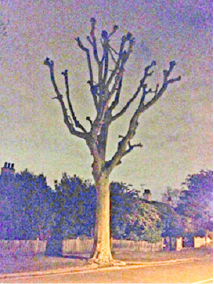
In digital cameras, “noise” is the grainy effect that appears when you start to see the smooth surface of the image break up into clumps of pixels or individual pixels. Shooting at a high ISO is the most common cause of this problem. Typically, using anything up to ISO400 is unlikely to be a problem. Depending on your camera, you may be able to go higher than ISO400 but even the best and most expensive cameras have trouble coping with certain lighting situations. If an image appears to be too noisy/grainy when viewed at 100%, it will not be suitable for use and will be rejected.
Sensor Spots refer to spots of dust that gather on the camera’s sensor or lens. These spots are visible in your captured images as grey dots and can ruin an otherwise great image. If we see these spots on your image, it cannot be accepted.
We encourage our contributors to make the most of their images and with the right kind of retouching, good images can become great images but if we do notice visible retouching elements in an image, such as poor masking or bad cut-outs then the image cannot be accepted.
Do not under any circumstances put your name, copyright information, or any other copy on an image that is not part of the image concept.
Please see our (as supplied by Getty) Intellectual Property Wiki document for a comprehensive guide to legal and intellectual property restrictions.
Retouched ModelsIn order to comply with a new French law, we cannot accept creative content depicting models if the models’ body shapes have been retouched to make them look thinner or larger than they are in reality. Any content submitted where this type of retouching has been carried out will be a breach these Submission Requirements and your Agreement with us.
Please note that other changes made to models like a change of hair color, nose shape, retouching of skin or blemishes, etc., are outside the scope of this new law, and are therefore still acceptable.
Logos and BrandingImages with branding visible will not be accepted. This includes: logos, business names, product names, any visuals used in advertising, or not owned by you and so on. Prominence is key here so even if it is very small, a logo that is visible when the image is viewed at 100% will mean rejection. Images may be re-submitted if visible logos and branding have been removed to a professional level using an approved editing tool.
Images that prominently feature isolated trademarked products, copyrighted designs and works of art will not be accepted. This includes, but is not limited to: paintings, prose, poetry, sheet music, some architectural characteristics, signage, designer furniture, designer clothing and products.
People - images featuring a recognizable person or persons for which a signed model release cannot be obtained will not be accepted.
Images for which a submitted model release has not been completed correctly will not be accepted.
Property - certain building exteriors and interiors may require a property release signed by the owner of the property.
Images featuring a property for which a signed property release is required but cannot be obtained will not be accepted.
Images for which a submitted property release has not been completed correctly will not be accepted.
As a point of clarity, here are some recent legal rejects from Getty, which should help you all avoid the pitfalls of not getting your images accepted.
Note: Usually, we would reject these but for one reason or another they snuck through and were bounced back to us. It shows you how eagle eyed their legal team is and how keen they are to ensure none of us get sued, which is of course a good thing:

